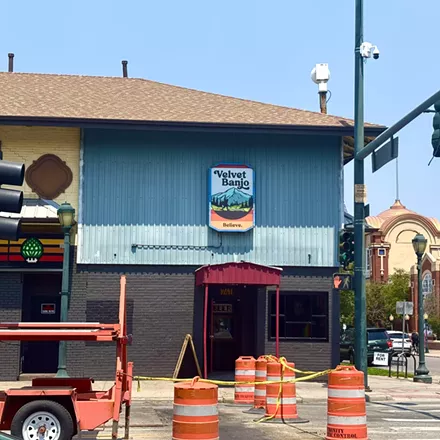While symphonies across the country are making cuts, the Washington Idaho Symphony is striking a tempo
By JENNIFER K. BAUERPULLMAN — When conductor Jeremy Briggs Roberts raises his hands this weekend to cue the start of the Washington Idaho Symphony’s 44th season, the music of Beethoven, Bruch and Mendelssohn won’t be the only thing on his mind.
In a world increasingly dominated by screens, orchestras are struggling to hit the right note with audiences with more leisure choices than ever. Classical music must compete in a culture that favors rock stars and a populace increasingly inclined to be entertained at home. Faithful patrons are aging and aren’t being replaced in the same numbers by youth.
In the wake of this shift, orchestras across the nation are slashing budgets but the Washington Idaho Symphony is not. Instead, it has raised the rate of pay for musicians and is bidding for new fans with an array of changes.
“The challenge will always be to convince people that classical music is relevant in their lives,” Briggs Roberts said. “It’s active, imaginative entertainment. In the age of YouTube and Netflix, when you can sit on a couch and passively consume entertainment, you can feel a connection to the music that you don’t get if you’re listening to it on your phone.”
———
The symphony, stocked with 40 to 60 top-notch musicians depending on the score, is the only professional orchestra within an 80-mile radius. Each concert is performed in two cities, Pullman and Clarkston. Each weekend costs $25,000 to put the orchestra on stage. Ticket sales pay for 20 to 25 percent of annual operating expenses while 70 to 75 percent comes from donors. The rest is grants.
Donors are the reason that since 2009, the symphony’s budget has grown from $81,000 to now just less than $300,000. A chunk of the added support came from Pullman benefactors Ed and Beatriz Schweitzer. This month the Schweitzers are matching all donations the symphony receives in hopes of inspiring more support.
“It really does take all of us in the community to make it sustainable,” said Beatriz Schweitzer.
The Schweitzers got involved with the symphony in 2013; before that they had not gone to a concert, she said.
“The two of us love music. I guess we’re always going to places for this or that. We had not taken the time to go to the concert and we thought, this is beautiful.”
The couple believe the symphony to be an asset to the region, especially for its families.
“It’s an opportunity for families to do fun and educational things together. … The little ones, they will grow to learn about classical music. That’s a future thing but it’s happening because parents are already there with their children,” Schweitzer said.
———
Bringing in a new generation of symphony enthusiasts is essential for the music to go on another 44 years. Longtime symphony supporters Richard Domey and Diane Gillespie recognized this years ago when they set up a fund to award a $1,000 cash prize at the symphony’s annual Young Artist Competition, open to regional high school and college students.
“Over the years it has been exciting to watch these kids and learn they go on to stay in classical music,” said Domey, a retired high school teacher and Pullman real estate agent.
The young artist concerts are among the most exciting of the season, he said, and they noticed that when the young people played, their friends showed up to watch. Domey grew up in foster homes until setting out on his own at age 15. One of his regrets is never learning to play music. He appreciated it, though, and after moving to Pullman in 1974 bought season tickets in hopes of finding a date. Gillespie filled the seat beside him two years later with a full appreciation for the dedication it takes to become a professional musician. In college she gave up the clarinet to pay her way through school, becoming a professor of English instead. Both have served as president of the symphony board and longtime members.
“The symphony is always thinking of itself in a higher category, as professionals and not just community members having fun,” Gillespie said. “It is moving forward in a lot of respects, both in getting donors and defining itself.”
———
Since 2009 the symphony has worked to increase musician pay to levels comparable with other regional community orchestras, Briggs Roberts said, going from $7 for a 2½-hour rehearsal or performance to $18 to $40, depending on the position.
“With that came a stronger sense of loyalty to the orchestra and also an increase in artistic quality,” Briggs Roberts said, noting ticket sales and annual giving have also increased.
Besides local musicians, the symphony features international stars. This year’s season includes British pianist Stephen Hough, named by The Economist as one of 20 living polymaths and whose performance The Guardian called, “the most perfect piano playing conceivable.”
Briggs Roberts wants people to identify the symphony as a “community crown jewel” and experience it as a “transformative community event” but one of the biggest challenges is getting people to come to what may be their first concert.
This is especially the case in the Lewiston-Clarkston Valley where attendance generally lags behind Pullman. In response, the symphony has tailored its concerts. Pullman’s Saturday night concert is billed as a date night and features wine donated by Merry Cellars. Clarkston’s Sunday afternoon concert is geared toward families with all children being admitted free with a paying adult. Students will also receive free admission in Clarkston while on the Palouse universities are supporting tickets for their students.
Briggs Roberts and other symphony supporters dream of filling the 900 seat Clarkston venue.
“I think the greatest leap is the initial leap to go to the concert,” Briggs Roberts said. “I think it’s wildly important that people realize what an asset this is to our community. How it makes our area a greater place to live.”
if you go WHAT: Washington Idaho Symphony
IN PULLMAN: 7:30 p.m. Saturday, Jones Theatre, Daggy Hall, Washington State University COST: $25 adults, $15 students 13 and older with valid ID, $10 children age 12 and younger. WSU students admitted free with ID. Free tickets for University of Idaho students are available at the UI Lionel Hampton School of Music.
IN CLARKSTON: 3 p.m. Sunday, Clarkston High School Auditorium COST: $25 adults, children admitted free with a paying adult, students admitted free with valid ID
TICKETS: Ticketswest.com, (800) 325-SEAT and all TicketsWest outlets, including Beasley Coliseum and the Lewiston Rosauers




























